In contrast to the ex-factory very high overclocked EVGA GTX 1080 Ti FTW3 Gaming, KFA2 / Galax is a deliberate use of reason and mediocrity, so that two fans on this rather slim dual slot card should be enough. In general, despite the expensive high-end GPU, this model is rather designed for pure understatement, which also has a certain charm.
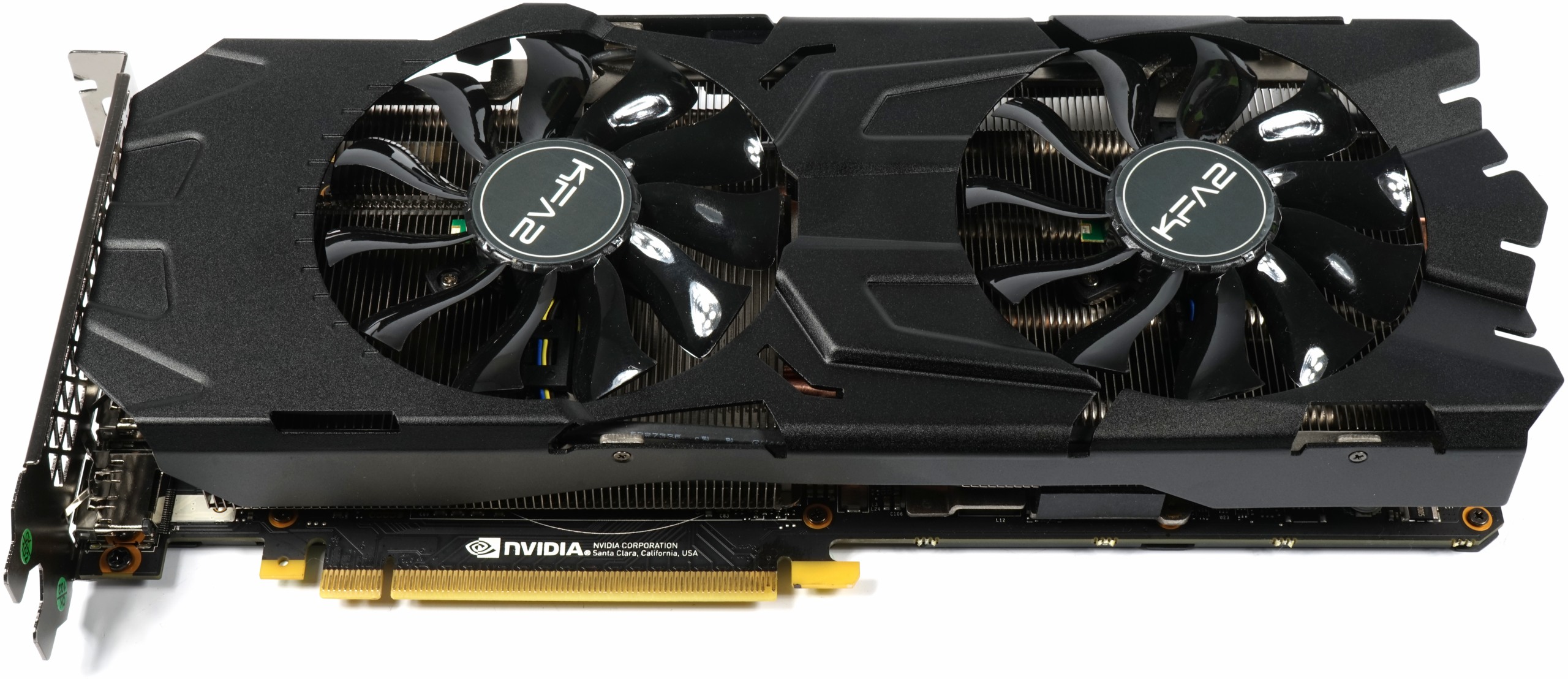
This map is more based on the specifications of the standard or Reference model ("Nvidia GeForce GTX 1080 Ti 11GB in test") and tries to make at least the cooling a little quieter and more efficient. We will see later that you can achieve certain performance advantages compared to the reference model by using slightly lower temperaurs alone.
Since the actual performance of all board partner cards depends more on the actual boost clock achieved, and thus causally depends on the cooling, the power target and above all the quality of the respective chip, any test based only on benchmark bars is more of a Random snapshot of a single specimen. This is precisely why we have focused on the actual technical implementation of each model and have been able to document this very well with our equipment.
Unboxing, dimensions and connections
The KFA2 / Galax GTX 1080 Ti EXOC is almost a lightweight in the circle of the other GeForce GTX 1080 Ti. At 976 grams, you undercut the heaviest card by almost 500 grams, which is already a certain house number and certainly also accommodates the motherboard.
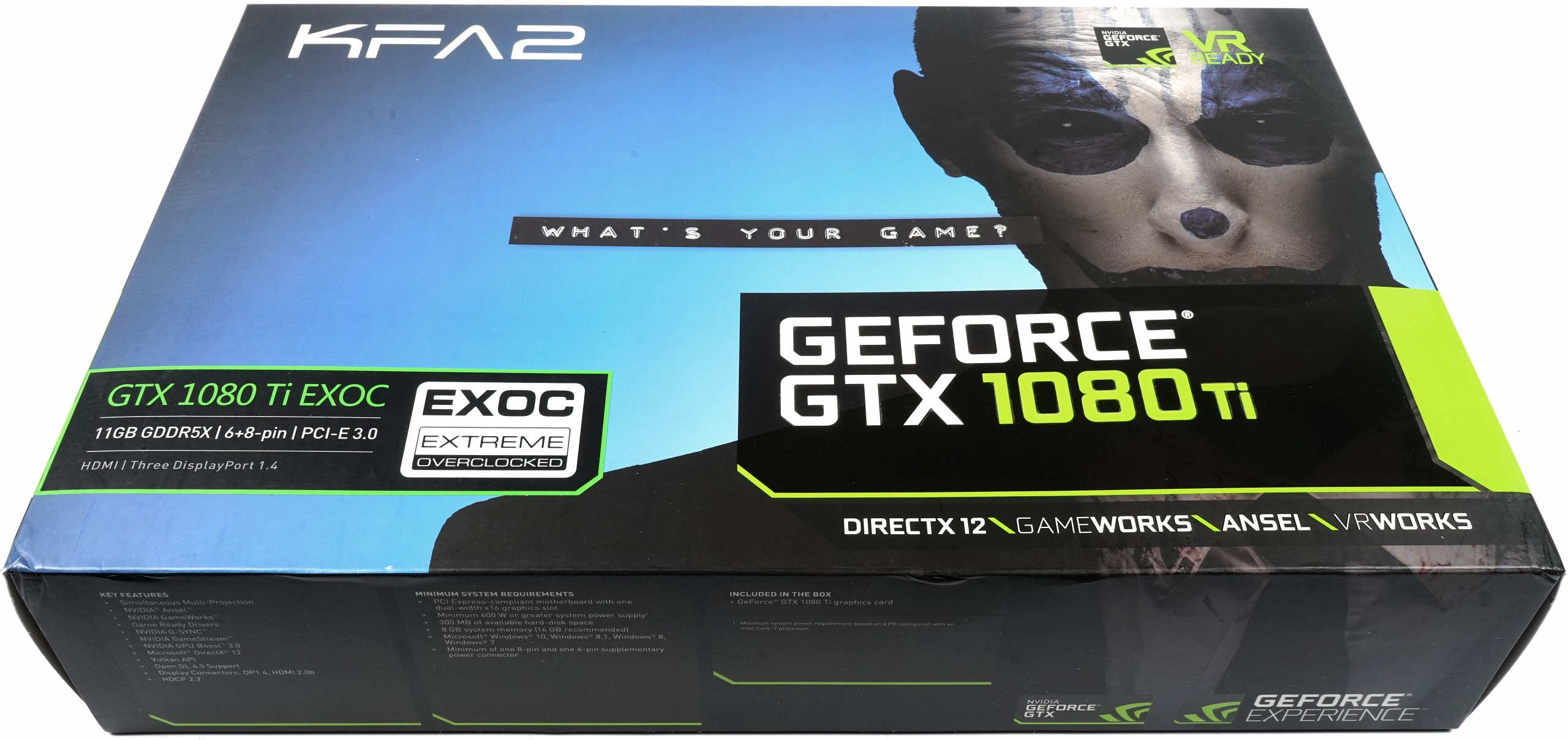
With 27.8 cm real installation length (outer edge slot aperture until the end of the cover), a height of rather modest 11.5 cm (upper edge motherboard slot to top edge cover) and a mounting depth of 3.5 cm, the dual slot card is rather an average large card, which is back then again approx. 0.5 cm of space is required, which should be taken into account in large tower coolers.
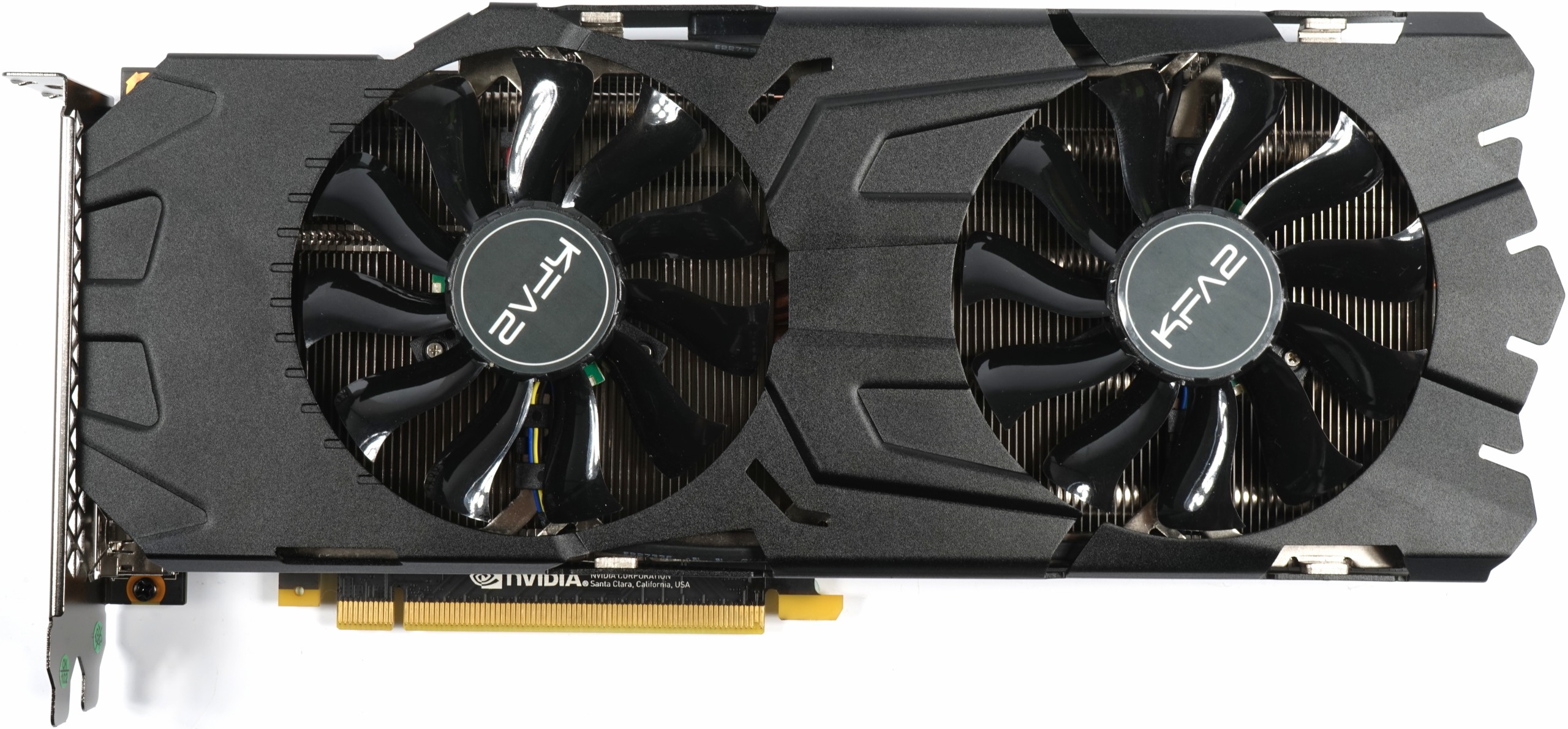 |
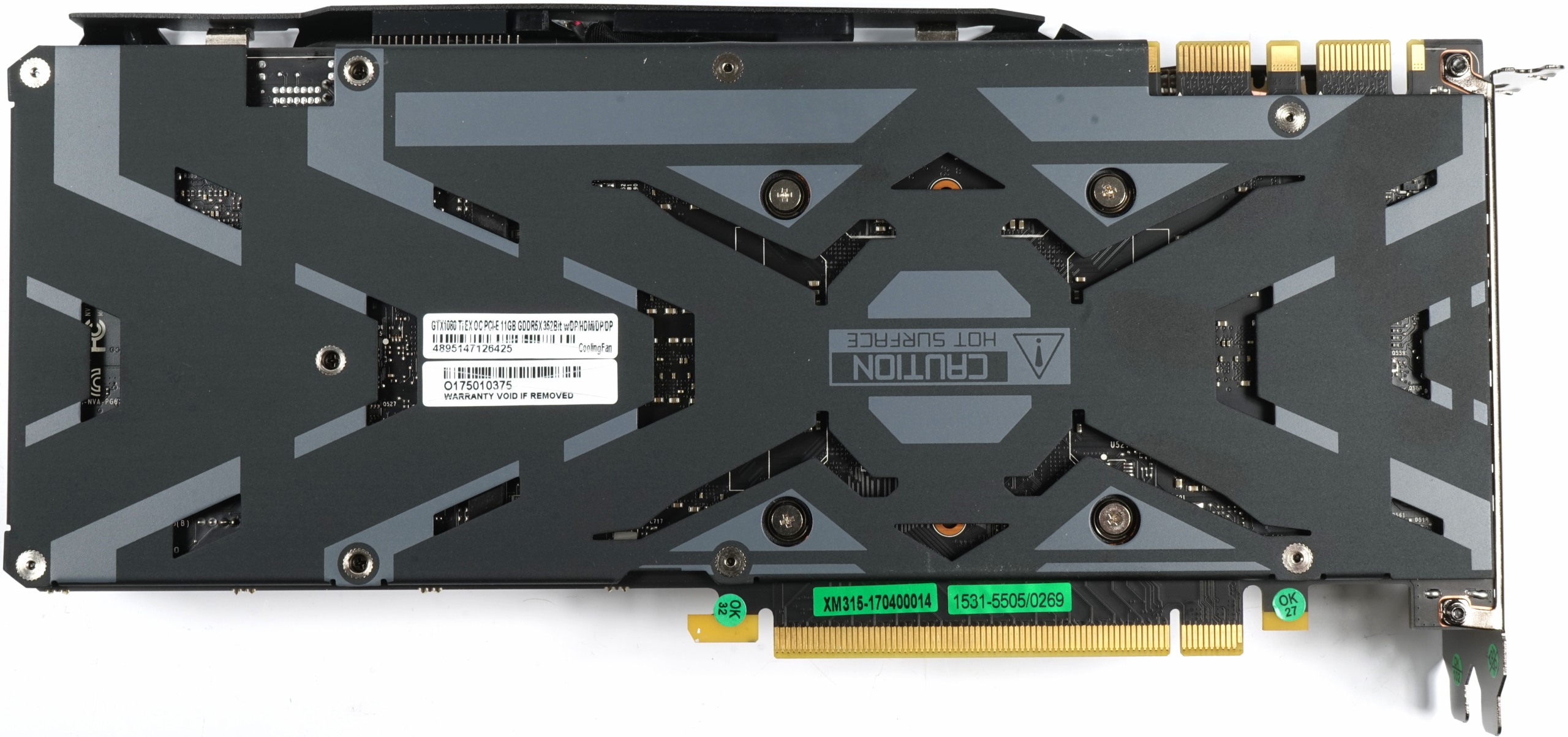 |
If the upper cover made of light metal had not been provided with optical firlefanz at the end of the card, the length would even be added to approx. 27 cm shrink. Despite these small design slips, the matt black lacquered cover is rather inconspicuous, but feels cool and valuable. The two-colour painted backplate is already visually much more pleasing
The top is characterized by the LED backlit "Geforce GTX" lettering. The two power supply connections (8-pin and 6-pin) sit unturned at the end of the board of the top.

The bottom and top show the vertical slat orientation of the cooler and the presence of a real VRM heat sink that actively cools other assemblies. Both the top and bottom show the bent cover, which tends to direct the hot exhaust air towards the back of the card, thus reducing a possible re-sucking.

The end of the map shows the four 8 mm heatpipes for the right part of the radiator structure. However, from this side the fifth, a 6 mm heatpipe, is not visible from the outside. But more on that later. As with the reference design, the variety of connections is based on standard costs from an HDMI 2.0 port, as well as three DisplayPort 1.4 jacks. The old-fashioned dual-link DVI-D connector had already been saved by Nvidia in the reference design as a precautionary measure. Since the reference board is also used in this card, this similarity is not coincidental.
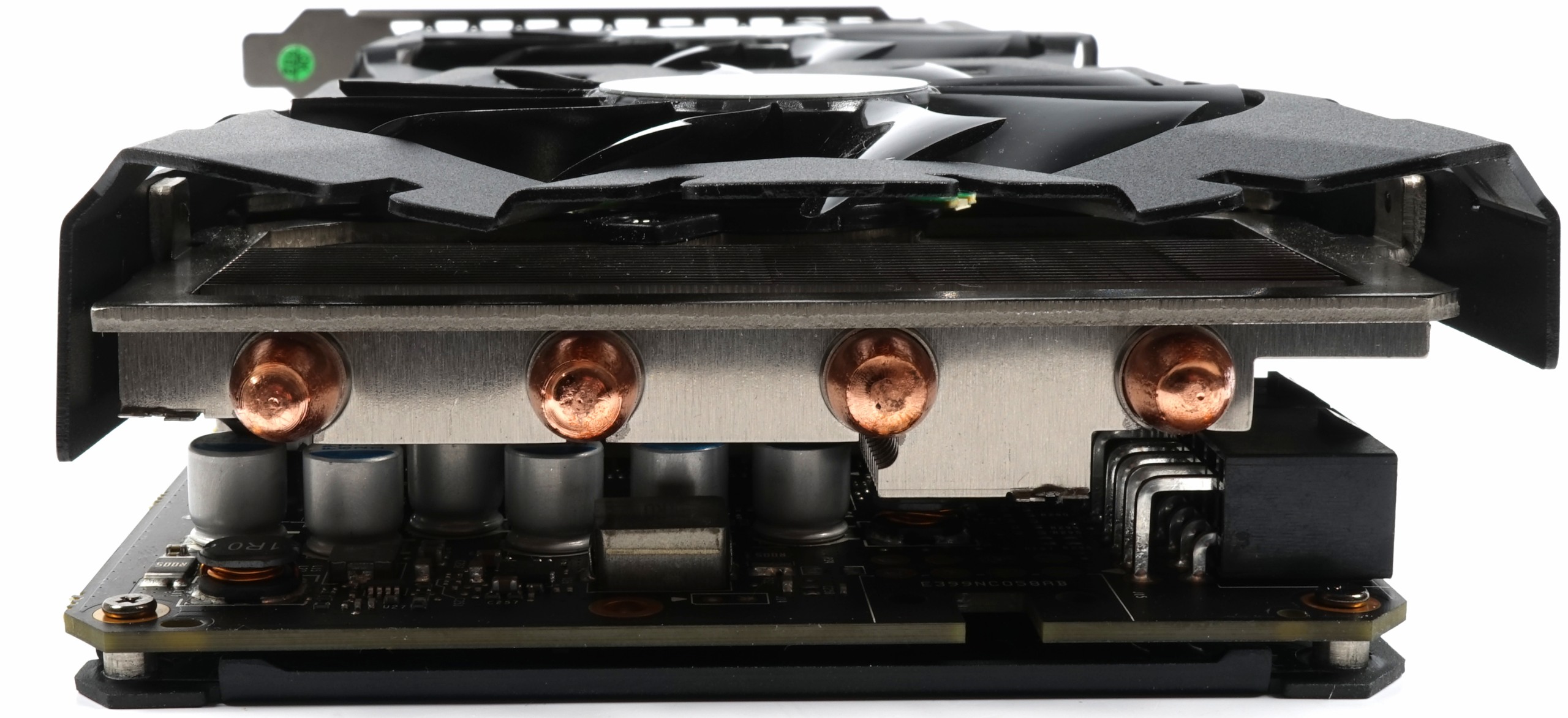 |
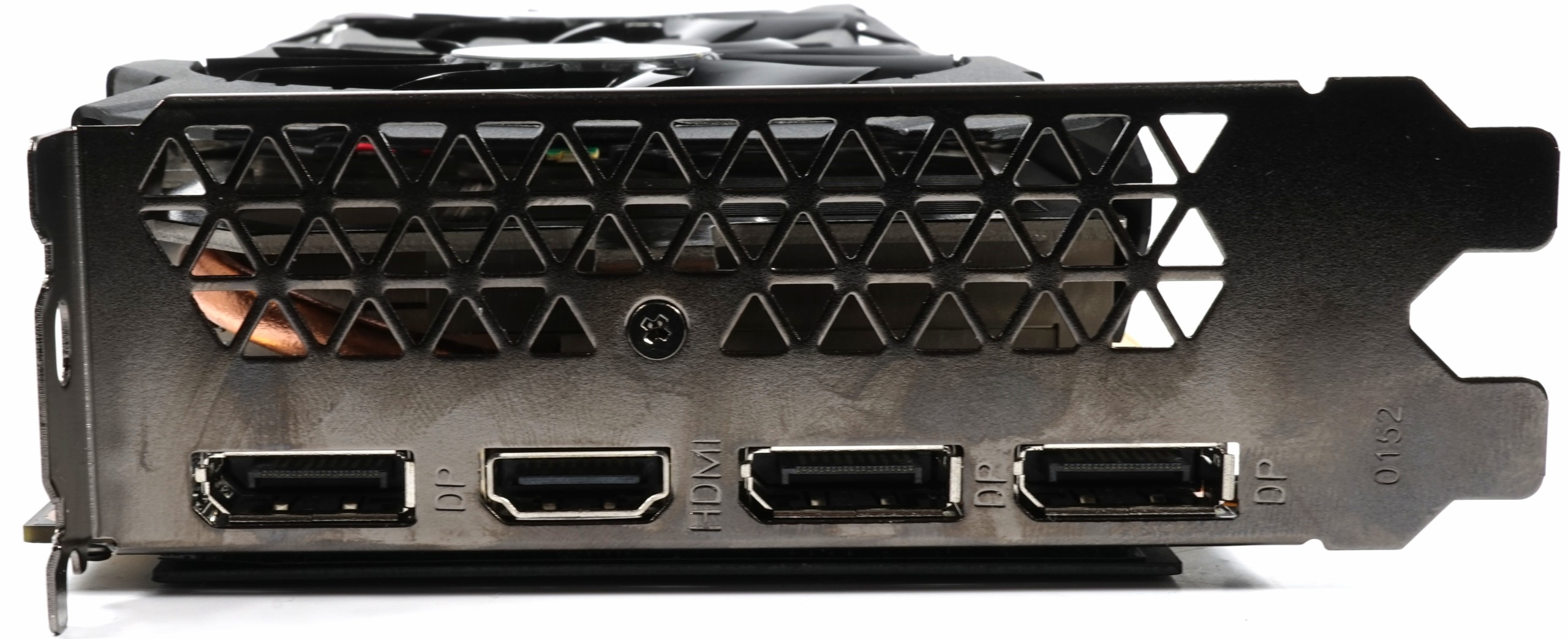 |
Specifications
The GPU-Z screenshot shows us the most important key data in advance, whereby the actual boost achieved with our model was significantly higher:
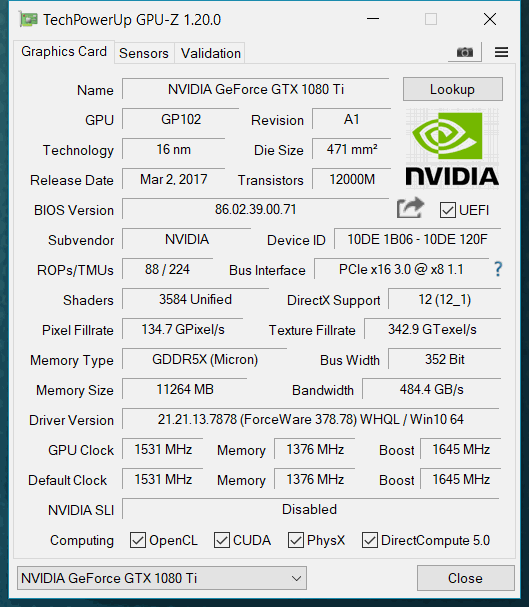
Finally, the whole thing again as a tabular comparison to the other relevant graphics card models:
| Nvidia Titan X – (Pascal) Mr President, I would like to |
Nvidia Geforce GTX 1080 Ti FE |
Galax GTX 1080 Ti EXOC |
Nvidia Geforce GTX 1080 FE |
Nvidia Geforce GTX 980 Ti |
|
|---|---|---|---|---|---|
| Gpu |
GP102 | GP102 | GP102 | GP104 | GM200 |
| CUDA cores |
3584 | 3584 | 3584 | 2560 | 2816 |
| Base clock | 1417 MHz | 1480 MHz | 1531 MHz |
1607 MHz | 1000 MHz |
| Boost clock |
1531 MHz+ | 1582 MHz+ | 1645 MHz |
1733 MHz+ | 1076 MHz+ |
| Memory Size & Type |
12 GByte GDDR5X |
11 GByte GDDR5X |
11 GByte GDDR5X |
8 GByte GDDR5X |
6 GByte GDDR5 |
| The size |
471 mm2 | 471 mm2 | 471 mm2 | 314 mm2 | 601 mm2 |
| Technology |
16 nm | 16 nm | 16 nm | 16 nm | 28 nm |
| Transistors |
12 billion | 12 billion | 12 billion | 7.2 billion | 8 billion |
| Streaming Multiprocessors (SM) |
28 | 28 | 28 |
20 | 22 |
| GFLOPS (basic clock) |
10.157 | 10.609 | 10975 |
8.228 | 5.632 |
| Texture Units |
224 | 224 | 224 | 160 | 176 |
| Texture fill rate |
317.4 GT/s | 331.5 GT/s | 342.9 GT/s |
257.1 GT/s | 214 GT/s |
| Rops |
96 | 88 | 88 |
64 | 96 |
| Pixel fill rate |
136 GPix/s | 130.24 GPix/s | 134.7 GPix/s |
114.2 GPix/s | 116.7 GPix/s |
| Storage data rate |
10 Gbps | 11 Gbps | 11 Gbps | 10 Gbps | 7 Gbps |
| Storage bus |
384 bits | 352 bits | 352 bits | 256 bits | 384 bits |
| Memory bandwidth |
480 GByte/s | 484 GByte/s | 484.4 GByte/s | 320 GByte/s | 336 GByte/s |
| L2 cache |
3 MByte | 2816 KByte | 2816 KByte | 2 MByte | 3 MByte |
| Tdp |
250 watts | 250 watts | 250 Watt (PT) |
180 watts | 250 watts |
Test system and measurement methods
The new test system and the methodology have already been described in great detail in the basic article "How We Test Graphics Cards" (English: "How We Test Graphics Cards") and therefore, for the sake of simplicity, we now only refer to this detailed Description. So if you want to read everything again, you are welcome to do so. However, we have improved CPU and cooling once again in order to largely exclude possible CPU bottle necks for this fast card.
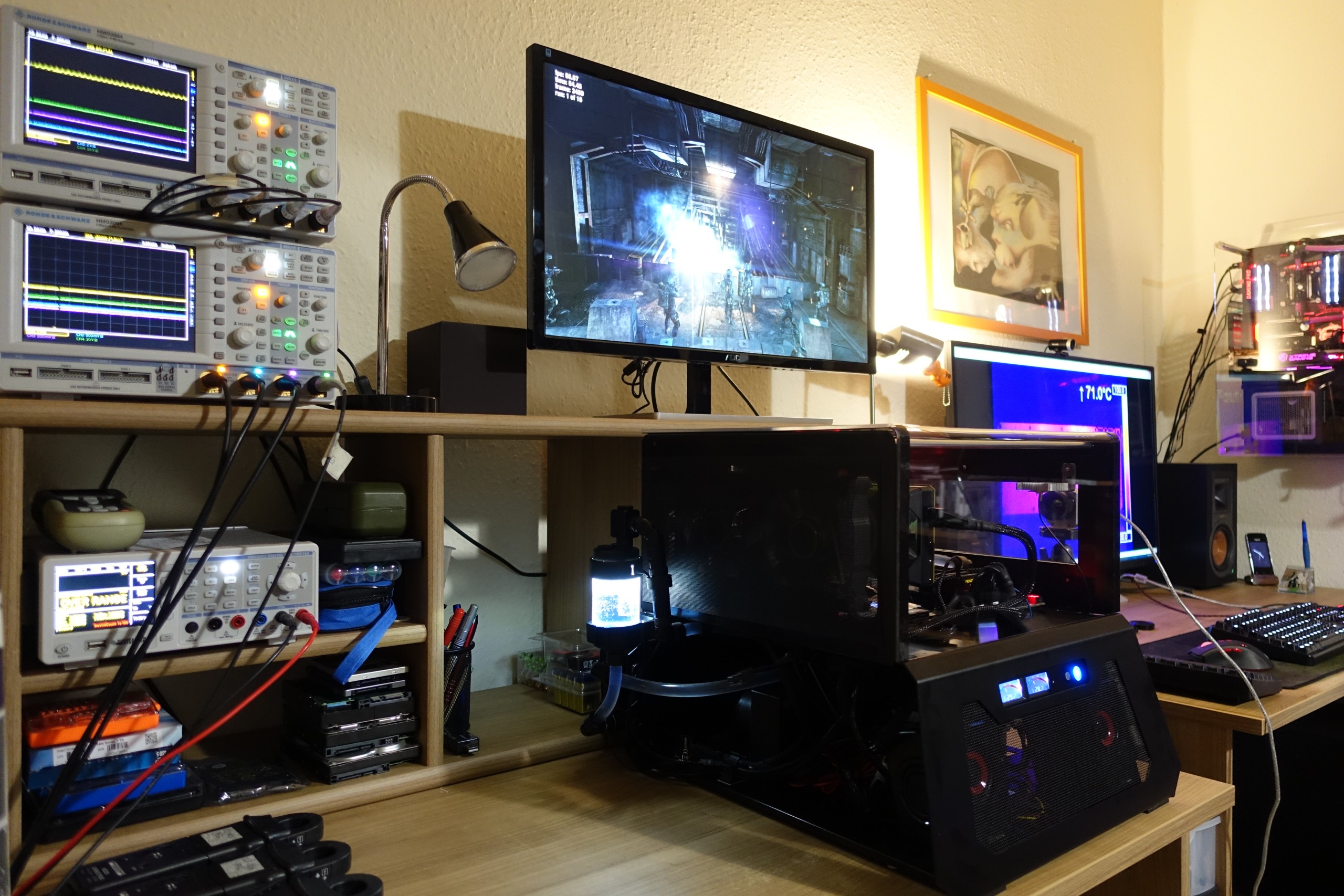
If you are interested, the summary in table form quickly provides a brief overview:
| Test systems and measuring rooms | |
|---|---|
| Hardware: |
Intel Core i7-6900K -4.3GHz MSI X99S XPower Gaming Titanium Corsair Vengeance DDR4-3200 1x 1 TByte Toshiba OCZ RD400 (M.2, System SSD) 2x 960 GByte Toshiba OCZ TR150 (Storage, Images) Be Quiet Dark Power Pro 11, 850-watt power supply Windows 10 Pro (all updates) |
| Cooling: |
Alphacool Ice Block XPX Alphacool Ice Age 2000 Chiller 2x Be Quiet! Silent Wings 3 PWM (Closed Case Simulation) Thermal Grizzly Kryonaut (for cooler change) |
| Housing: |
Lian Li PC-T70 with expansion kit and modifications Modes: Open Benchtable, Closed Case |
| Power consumption: |
non-contact DC measurement on the PCIe slot (Riser-Card) non-contact DC measurement on the external PCIe power supply Direct voltage measurement on the respective feeders and on the power supply 2x Rohde & Schwarz HMO 3054, 500 MHz multi-channel oscillograph with memory function 4x Rohde & Schwarz HZO50, current togor adapter (1 mA to 30 A, 100 KHz, DC) 4x Rohde & Schwarz HZ355, touch divider (10:1, 500 MHz) 1x Rohde & Schwarz HMC 8012, digital multimeter with storage function |
| Thermography: |
Optris PI640, infrared camera PI Connect evaluation software with profiles |
| Acoustics: |
NTI Audio M2211 (with calibration file) Steinberg UR12 (with phantom power for the microphones) Creative X7, Smaart v.7 own low-reflection measuring room, 3.5 x 1.8 x 2.2 m (LxTxH) Axial measurements, perpendicular to the center of the sound source(s), measuring distance 50 cm Noise in dBA (Slow) as RTA measurement Frequency spectrum as a graph |
































Kommentieren